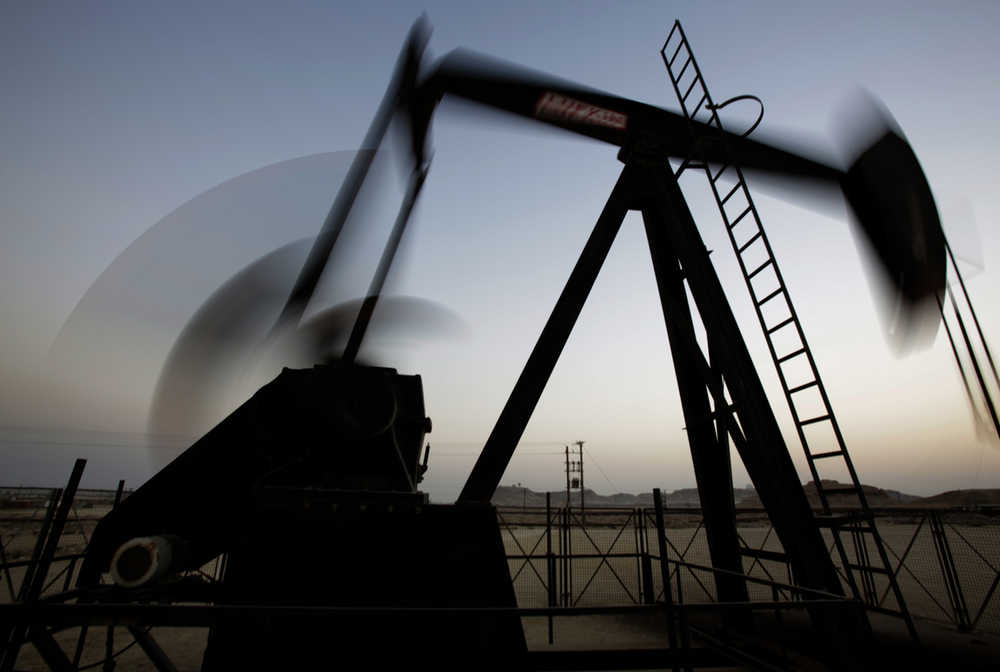NEW YORK — The world burns enough oil-derived fuels to drain an Olympic-sized swimming pool four times every minute. Global consumption has never been higher — and is rising.
Yet the price of a barrel of oil has fallen by more than half over the past six months because the globe, experts say, is awash in oil.
So, where did all this oil come from?
The Earth has been accumulating oil and natural gas for about a billion years or so. Humans have been drilling and burning crude and gas in significant amounts for only the last 156 years, since the 1859 birth of the oil industry in Pennsylvania.
So, even when oil prices spiked earlier this decade amid worries that oil supplies would soon run low, scientists and oil companies knew there was plenty available. It wasn’t so much a question of how much oil and gas was left in the earth’s crust, but whether we could figure out how to squeeze it out and make money doing so.
“How much oil we have is an economic and technical question, not a geologic one,” says Doug Duncan of the U.S. Geological Survey. “There’s far more than we can extract economically using today’s technology.”
More than enough, for now at least, to sustain record high consumption of 91.4 million barrels per day. There are 42 gallons in a barrel, so that’s 3.8 billion gallons per day. Looked at another way, it’s as if every human on the planet went through a gallon of oil every two days.
Since 1980, the world has burned nearly 40 trillion gallons. That’s a bit more liquid than held by Lake Tahoe, the 11th deepest lake in the world. It’s enough to cover the state of California in oil to a depth of 14 inches.
While that may sound like a lot, remember that Lake Tahoe, on a map of the globe, is a pretty small dot. There is sedimentary rock that holds old organic matter under huge swaths of the earth’s crust. Some of the rock is 20,000 to 30,000 feet thick, says Scott Tinker, a geologist at the University of Texas’s Jackson School of Geosciences. Only a small portion holds oil and gas, but the scale of the possible resource is enormous.
That’s part of what worries climate scientists so much. Burning the oil and gas that we’ve already found — never mind what we haven’t yet — will lead to dangerous and possibly catastrophic changes in the earth’s climate, they say.
And we’re finding more oil and gas than we are using. For example, since 1980, even while we were consuming all that oil, the amount we’ve found, but haven’t yet produced, has more than doubled. The world’s proven reserves are now 1.7 trillion barrels, up from 683 billion barrels in 1980, according to a closely watched statistical energy review published by BP.
Technology advances come in fits and starts, and are usually spurred by high prices. The price of oil began rising alarmingly in the early and mid-2000s, inspiring oil companies to take risks to apply new technology to find harder-to-reach oil.
In 2007 and 2008, they hadn’t yet cracked the code, and consumption was rising fast, so oil spiked to nearly $150 a barrel.
They’ve now not only caught up to the growth in demand, but surpassed it. The big technological breakthrough this time was the means to tap so-called unconventional resources, especially layers of shale and other oil-and-gas rich rock.
In the past, drillers had to look for pools of oil and gas that had collected over millennia, forced by gravity and pressure from source rock into what are known as “traps.” Now they can access the layers of source rock directly, bringing billions of barrels of this unconventional oil suddenly within reach.
Rising production from these and other sources, including Canadian oil sands, oil found under mile-thick layers of salt in Brazil’s deep waters, and Iraq’s enormous fields has for now outpaced rising demand.
That has sent the price of oil under $50 a barrel — it closed Wednesday at $48.48 — after spending most of the last four years near $100. That’s less than what it costs to produce oil in many cases, which means production is likely to fall slowly until demand can catch up.
That could cause prices to shoot back up, and we might again wonder where the next barrel of oil will come from.
“A lot of people thought we were on a downward supply curve with more and more expensive oil and gas,” Duncan says. “New technology changed that equation. We don’t know if the equation will be changed again.”

